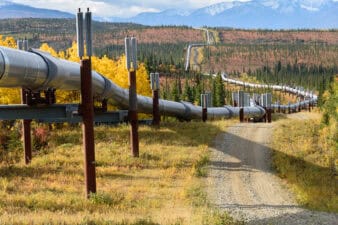Editor’s note: A previous version of this article incorrectly stated the size of Teck’s 2015 debt load. The Fool regrets the error.
Last September Teck Resources Ltd. (TSX:TCK.B)(NYSE:TCK) lost something vital: its investment-grade credit rating. It is a designation that the coal miner wants to regain because it is important for the company’s ability to fund its business going forward. That is why it is willing to do what is necessary to regain that designation as soon as possible.
Losing more than a label
Last fall, credit rating agency Moody’s downgraded Teck’s credit rating from Baa3 (the last rung of investment grade) to Ba1, citing the coal miner’s heavy capital spending and the weak commodity-price environment. That rating implied that while the company was not as vulnerable to default as lower-rated rivals, it faced substantial uncertainty should industry conditions grow weaker.
Unfortunately, conditions did grow weaker, which is why the rating agency continued to downgrade Teck’s credit rating further into junk. In December Moody’s downgraded the company to Ba3, and then in February it took Teck’s rating down to B3. That rating meant the company was more vulnerable than before, and that weak business conditions could impair its capability to meet its financial obligations going forward.
That said, the credit rating was more than a label. It impacted the company’s ability to issue debt to refinance upcoming maturities and fund capex. For example, Teck needed to pay an 8% interest rate to issue five-year debt and 8.5% to issue 10-year debt earlier this year compared to an average interest rate of 4.8% on the debt it issued when it was investment grade.
Those higher interest rates cost Teck more money, which is a burden it wants to eliminate by regaining an investment-grade credit rating.
Putting a plan into action
Teck has already started to trim away its debt, reducing it from $7.747 billion at the end of last year to $7.733 billion as of the end of the second quarter. That said, the company still has a way to go. CFO Ron Millos stated that it would need to trim another $1.5-2 billion to regain its investment-grade rating.
The CFO noted that additional asset sales would likely be its ticket to hitting the debt-reduction target. He said the company is working to put some of its infrastructure assets up for sale, including the Waneta Dam and Ridley coal terminal in British Columbia. In addition, the company has several non-core exploration projects it could sell. However, it will not sell assets at just any price; it needs to get a good value.
Further, one of the reasons the company’s capex spending has been so high in recent years is due to its participation in Suncor Energy Inc.’s Fort Hills oil sands mine project. Teck is responsible for $2.94 billion of the project’s cost, including about $960 million in 2016. That said, the rate of spending will wind down in 2017 with the project expected to start producing by the fourth quarter. Because of that, the project should start generating cash flow for the company instead of consuming it.
Investor takeaway
The commodity market downturn cost Teck its prized investment-grade credit rating. It is a designation that the company wants to earn back, so it can reduce its borrowing costs. While it will take some time, the company is taking steps in the right direction and, given the upcoming shift at Fort Hills, it could regain that key credit designation within one year if everything goes according to plan.






